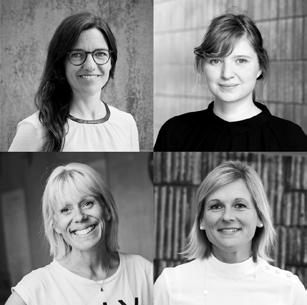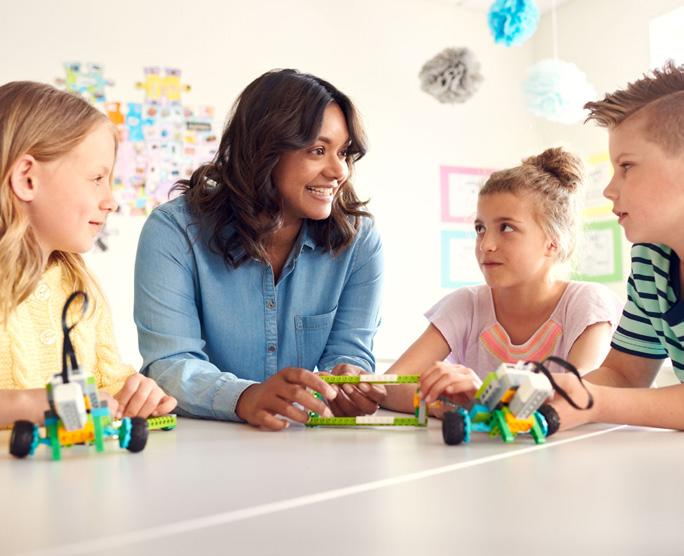KINNARPS CL ASSROOM BY
ELISABET INGEMARSSON
E L I S A B E T I N G E M A R S S O N, P R I N C I PA L O F S J Ö LU N DA S C H O O L ( P R E S C H O O L- 6 ) , L I D K Ö P I N G , S W E D E N
Pedagogy and technology change – but furnishing learning spaces that support the individual and the students who are to work in them creates the very best opportunities for active learning. Both now and in the future. This is the view of Elisabet Ingemarsson, principal of the innovative Sjölunda school, a municipal school for children from preschool to year 6 in Lidköping, Sweden. Elisabet and her colleagues have realised their shared vision of activity-based learning and multi-modal work which takes the individual’s abilities and needs as its starting point. In the classroom, the children have the opportunity to develop and choose their own place for different tasks. A CLASSROOM FOR ACTIVE LEARNING “For me, the fundamental thing is that the classroom should activate the children and enable them to choose between different workplaces. I have designed a classroom consisting
“These four spaces signal to the children that it’s OK to
of a large home base supplemented by two group rooms
change their position and way of working in discussion
with project tables and soft seating. The classroom offers
with their teacher. I have also chosen to abandon the classic
four completely different ways of working.”
teacher’s desk. Instead, there is a desk where the teacher can
The students can choose to work on the floor, which is covered with a soft, comfortable carpet that frames the whole room and signals to the children that it’s okay to sit here.
set up their computer and put their work material down, and then move freely around the classroom.” Elisabet Ingemarsson’s starting point when she created her ideal classroom was her extensive experience. “I didn’t actively look for research that supports my theories,
I have designed a classroom for preschool to 6 that offers four completely different ways of working.
but through my proven experience I have seen how the children react to different environments. I also base my work on Reggio Emilia’s philosophy of the importance of a good learning environment, what the learning environment signals to the students and how they can conquer the learning environment. In Sjölunda, we think we’ve achieved a really
In the classroom there is an education table with chair, which
good result, where the students have a great interaction with
supports a more traditional way of working. This is supple-
the teachers and the environment. We’ve seen that when
mented by a high table that enables the students to stand
we work with activity-based learning, we get good work
up and work – they can also choose to sit at the high table on
processes in the room, since the children find their own way
a high stool. The fourth parameter is soft seating in the form
of learning. If a student is lying on the floor reading a book,
of easy chairs and sofas.
it isn’t actually the position itself that’s important, but the
4






